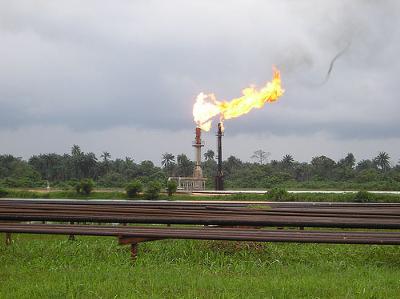Stack Height
by Constantin
(Romania)
I need to size the height of a dispersion stack for the hydrogen sulphide.
Barry's Response - Hi Constantin:
My main job is figuring out the best height for these stacks. For this type of assessment, I use:
The stack can be used as a gas flare if:
1 - Flow rate (cubic metres per day, for example)
2 - Gas composition with mole fractions (or percents) for each component, or at least gas heating value and H2S content
3 - The exit diameter at the tip of the stack
4 - Location of stack (longitude, latitude)
5 - There are air quality standards for one-hour, 24-hour, and/or annual concentrations of H2S and SO2 in your country (in ppm or g/m3).
If the stack doesn't have a visible flame:
1 - The stack diameter
2 - The exit temperature
3 - The exit velocity
4 - The H2S and/or SO2 emission rate (in grams per second for example)
5 - Location of stack (longitude and latitude) and distance from nearest buildings.
6 - The one-hour H2S and SO2 concentration standards in your country (in ppm or g/m3).
7 - These same parameters work for NOx particulates and other stuff too.
With this info, you can do a simple screening. To make for a more refined study I would need:
1 - Stack base elevation and terrain maps around the flare site, usually within 10 km.
2 - At least one year (preferably five) of hourly meteorological data. ISC-PRIME and AERMOD use temperature, wind direction, wind speed, and sunshine intensity as input parameters.
Search this site for more information now.
As an air quality consultant and dispersion modeling expert, I would normally offer these practical suggestions
A dispersion stack's height is important for mitigating emissions and ensuring environmental compliance. Several factors need to be considered when determining stack height:
- Calculate the hydrogen sulfide emission rate from your source. It involves determining how much hydrogen sulfide is released into the atmosphere based on variables like process operations, equipment, and chemical composition.
- Check your local environmental regulations. Stack heights, emission limits, and dispersion modeling methods may vary by region.
- Meteorological data: A proper assessment needs meteorological data. Pollutant dispersion is influenced by wind speed, wind direction, temperature, and atmospheric stability classes. To run dispersion models, you'll need this data.
- Simulation of hydrogen sulfide dispersion in the atmosphere using dispersion modeling software. By doing this, you'll be able to estimate concentrations at ground level and assess potential health impacts.
- Conduct a risk assessment to evaluate potential health and environmental risks. It might involve assessing exposure levels for nearby communities and sensitive receptors.
- Dispersion is also affected by stack design factors, like exit velocity and exit diameter. It's possible to achieve better dispersion and reduce ground-level concentrations with a well-designed stack.
- Explore the best available techniques for reducing emissions, like using scrubbers or other control measures at the source to reduce hydrogen sulfide release.
Don't forget to size your stack height right, not just for compliance, but also to minimize the impact of emissions on the environment. Engineering expertise, environmental knowledge, and modeling tools are often required. Share more details about your project if you have specific data or questions, and I'll be able to provide more tailored advice.
Comments for Stack Height
|
||
|
||
|
Click here to add your own comments Join in and write your own page! It's easy to do. How? Simply click here to return to Hi-Tech Idea. |
Do you have concerns about air pollution in your area??
Perhaps modelling air pollution will provide the answers to your question.
That is what I do on a full-time basis. Find out if it is necessary for your project.
Have your Say...
on the StuffintheAir facebook page
Other topics listed in these guides:
The Stuff-in-the-Air Site Map
And,
Thank you to my research and writing assistants, ChatGPT and WordTune, as well as Wombo and others for the images.
OpenAI's large-scale language generation model (and others provided by Google and Meta), helped generate this text. As soon as draft language is generated, the author reviews, edits, and revises it to their own liking and is responsible for the content.



